How To Open A Bar
Intro
1. Decide what type of bar you want to open
Neighborhood Bar
You’ll spot this type of bars pretty much everywhere around the US. They are small, cozy establishments where the locals come for a round of drinks on a Friday night. It has this friendly “home away from home” atmosphere and most probably, you will eventually know all the regulars.
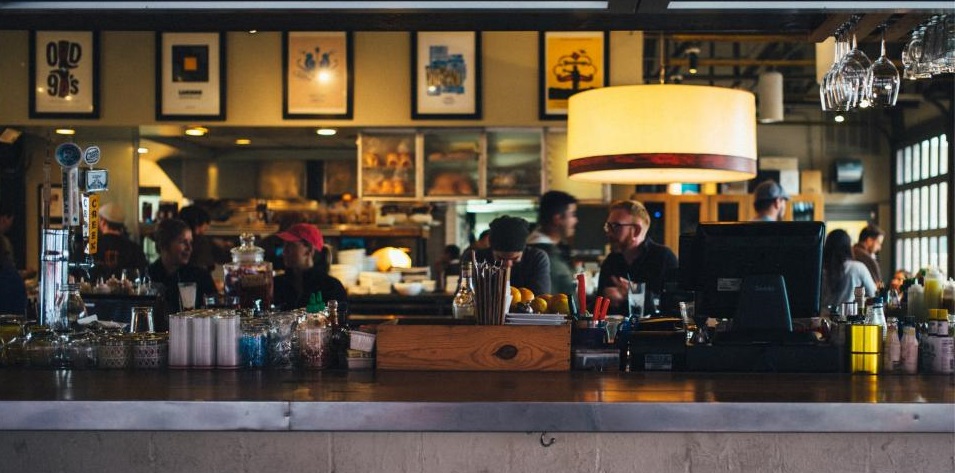
The startup costs majorly depend on your location and the type of license you decide to purchase (beer and wine only or liquor as well). How much would it cost to open such a bar? You can purchase an existing one for around $45.000 in a small town. Your revenue would highly depend on the location and the bar’s capacity. Yet a major advantage of starting a neighborhood bar is that you can duplicate it in any other location and double the profits.
Sports Bar
Compared to neighborhood bars, sports bars usually offer a wider range of food on the menu– pizza, sandwiches and other appetizers to keep the crowd full during matches. If you want to open your own bar, you’ll have to invest in a couple of wide screen TVs, decent audio and most probably satellite TV as the percentage of your revenue highly depends on the technology you use. Your customers come with a purpose to have fun together watching a sport even on big screen. Additionally, to keep the public entertained, you can add video games and sports oriented games to keep your customers engaged while there’s no major event on air. Potential revenue depends on your bar’s location, capacity and concept.
Brewpub or Beer Bar
Beer bars offer a wide selection of different beers with some appetizers and snacks on the menu. Brewpubs typically offer a few types of their own draft beer with some bottled beer selections too. With a brewpub you also have the ability to control what and how much products you produce.
The pros of starting a beer only bar or microbrew pub is that you’ll spend less money and efforts on obtaining the license. Another major advantage for those who want to open such a bar – men and young adults drink beer more often than any other alcoholic beverage, meaning you will always have customers.
How much does it cost to open a bar? The costs of opening a brewpub can be quite high (estimated around $450.000-$800.000) as you’ll have to invest into equipment. Yet the investment can pay off fast if you start producing a popular beer and re-sell it later on. The costs of starting a beer bar are much lower ($50.000-$100.000) and depend on the size and location. Don’t forget to analyze the drinking trends in the community, as those would drastically influence your revenue. Say a beer bar in Texas would generate more profits, compared to the same sized bar in a trendy NYC neighborhood.
Specialty Bar
Specialty bars focus around a certain theme (e.g. cigar bars) or certain types of drinks (wine, martini bars). Yet, in both cases a specialty bar should offer a vast variety of products. For instance, martini bars, except for serving different types of martinis also offer martini-based cocktails and mixes.

Club
Clubs can drastically vary in size – from a small lounge cocktail bar with a DJ set in the corner; a medium-sized venue with a stage to host bands in the evening or a full-scale large dance club with parties going till dawn. No matter which size you choose, prepare to spend a lot of time on marketing your establishments as club’s revenue mainly depend on the amount of “buzz” and “trendiness” around them.
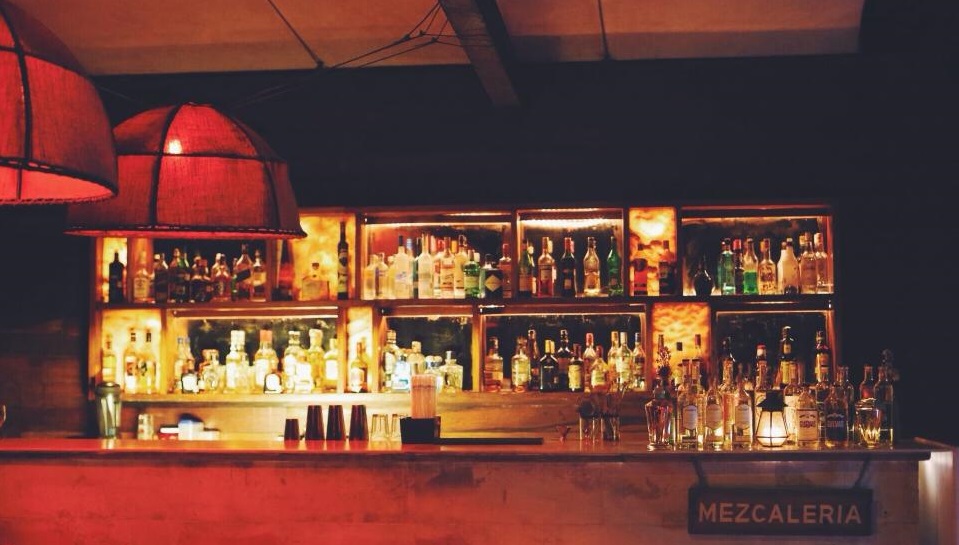
Create your concept
You need to have a clear vision of what your establishment would be like up to the tiniest details.
Why?
- It will help you stay focused on the bar
- It will help your future guests to describe it to others and spread the word.
The concept should fit into both your location and market. Already got a location in mind? Work in reverse and think of a place the local community will love.
Possible concepts - a themed-beach bar with occasional beach parties; a high-end, sophisticated martini bar for women etc.
Don’t limit yourself at first and list even the wildest ideas.
Do your research and visit various establishments around your area. Check out their concepts, think of things they lack or which you would have done in different manner. Understand who their clientele is and how you can attract them as well.
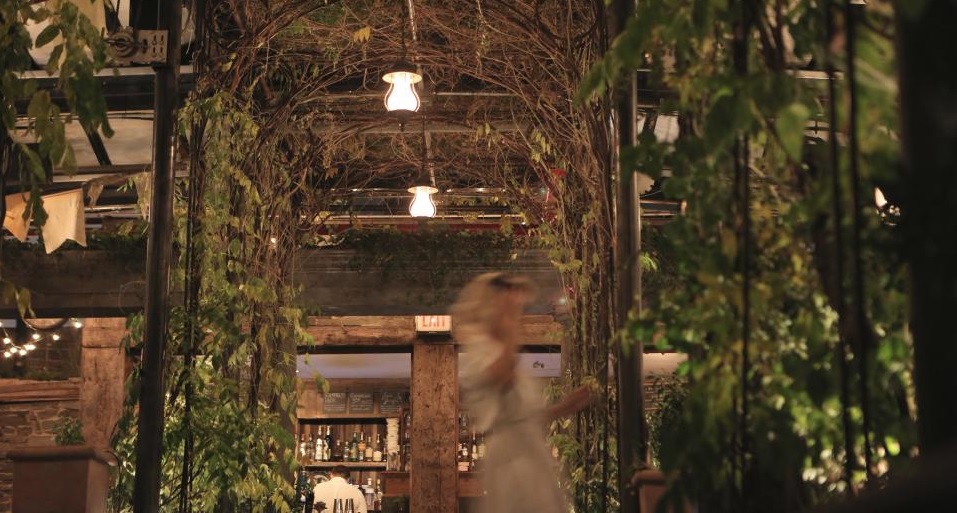
Here’s a list of the world’s best bar concepts and 17 more awesome, yet bizarre bars.
Plus, the best bars in America 2019th edition.
Now, as you have a general idea of what type of bar you’d like to open, it’s time to get to more complicated issues – deciding on the structure of your business to-be!
2. Identify your business structure
The next crucial point for opening up a bar is to decide on the best option for you: buy an existing bar, build your own, remodel or buy a franchise. Let’s have a look on each of them.
Buying an existing bar
Number 1 advice here – do your research in advance before taking over. Here are some ways to get to know everything about the place you plan to buy:
- Become a regular. Observe the customers and staff; strike a conversation with a few to ask about their overall impressions of the place. This way you’d probably get a lot of unbiased and truthful insights.
- Ask the right type of questions – Is the facility clean? How well organized is the staff? Do they pay enough attention to the customers or are they also attentive to their servers’ needs? What are the customers saying about the atmosphere, food, cleanness etc?
- Consult about your investment. Usually a fair price for a bar equals the amount of one year’s gross receipts. However, that can vary a lot depending on the location and some other factors, including the seller’s motivation to sell the place and the overall state of the economy. Consult with your lawyer or accountant concerning the deal. You should also compare the bar’s inventory to the actual sales volume to stay sure you’re getting the correct numbers for a year’s gross receipts.
- Run a complete inventory before and after you buy. You need to make sure you are getting everything stated in the contract before and after you take over.
Creating your own bar
How to start a bar from nothing? It may sound exiting; yet it can also be a long and expensive process, involving a lot of additional costs.
Budget all financial detail with high estimates. Afterwards, plan your projected income with conservative estimates.
Then balance the numbers against your resources before you start. As well, mind additional personnel costs, as you’d probably need help of the architect, contractors, real estate agent etc.

When remodeling an existing place that closely meets your expectations and concept, bear in mind the following points:
- Avoid radical takeover and transition while operating under the same name.
- Decide whether you’d like to operate while remodeling or shut down and re-open later on.
- Decide whether you’ll keep the old name or introduce the new one.
Before committing, make sure you have carefully analyzed the deal. Make a list of all the things you’d like to change, then consult with your team if it’s worth the efforts and money.
Buying a franchise
Joining a franchise gives you the chance to avoid some of the mistakes as a newbie bar owner as you’ll be part of a larger, experienced organization. On the other hand, you have less room for creativity and adding a personal touch to the place.
No mater which type of business structure you choose, make sure you have consulted with your lawyer and accountant at this point and you have pulled out the best of the deal and settled on the right type of ownership.
3. Create a business plan
Here are the essential tips to craft a good business plan:
- Outline your concept in details.
- Include profit and loss analysis to represent the bar’s profitability.
- Highlight the benefits of your location.
- Include a detailed overview of your staff with salaries.
- Outline the possible risks.
Your business plan should clearly outline what you’re going to do, how you’re going to do it, and how much it will cost. Here’s a great video presentation breaking down business plan writing even more:
Identify your customers
The good news is – the vast majority of the materials you need for the research are already available.
The bad news is – you’ll have to gather and analyze it yourself (or hire a pro to do it for you).
If you choose DIY approach, here’s the data you’ll need:
- General demographics could be gotten via your local chamber of commerce or the SBA. Pay attention to the age, gender, matrimonial status and income levels. Your bar’s concept might need to go to the opposite direction if you are in a sophisticated upscale neighborhood, than if you are in a college town.
- Local laws and regulations. Some cities have really odd laws you had no idea about. Double-check everything closely related to your niche to avoid unpleasant surprises and lost profits in the future.
- Alcohol trends. Usually, you potential suppliers can provide all the valuable information about your customers and what they like to drink.
- Lifestyle trends. Scan your local papers and magazines to get the idea of successful establishments in your area and what concept lies behind them. It would be profitable to open a smoothie/juice bar in a community interested in healthy living and sports.
Here are a few sample questionnaires you can use to do the research:
- Sports Bar
- Theme/Specialty bar
- Nightclub/Lounge Bar

Analyze your competition
- Overall amount of visitors. The best time to check out how your competition is really doing is on Monday, Tuesday, and Wednesday,
- Buying habits of your competitors’ customers.
- General likes and dislikes of a particular place.
You’ll be surprised to know that a lot of bar owners and their employees are actually willing to talk about their business and spill out all the details you need.
Alternatively, you can hire a marketing company to run the research for you. Just make sure you contact reliable folks.
In any case, by the time you finish your research you should have a very specific idea about your targeted customers e.g. working female professionals in the age of 25-35 who have incomes higher than $50.000 and like relaxed atmosphere.
Choose your strategy for overcoming competition
- Cost-based market penetration strategy or in simple words – underprice your competitor. It may not be the best path to adopt though as you will have to be really careful with your expenses and have a sever cutting-cost policy in place.
- Differentiation strategy sets your business apart from competitors by offering a unique feature. Say, you could create a better menu, focus more on the atmosphere or offer more in-house entertainment.
- Concentration strategy implies focusing on specific clientele only and avoiding competition in the first place. For instance, when opening a whiskey bar you should rather market it to one specific segment of population (those with higher income), rather then everyone else.
We’ll talk of more specific marketing techniques to help you dominate the market and attract more customers shortly. Before that, you’ll have to make another important decision.
4. Find the ultimate location
The choice of location should depend on the following factors:
- Your budget. Low rent and high visibility rarely come hand in hand.
- The type of clientele you’d like to attract
- The bar concept and design.
- Accessibility to customers.
Some say location plays a huge role, other claim that with a right approach you can make a profitable bar business at any place. For instance, an always crowded theme-bar in my are is situated in a hidden alley, in the basement without even a sign. Yet, you hardly ever find a table on a Friday night.
On the other hand, paying thousands for a winning location (for a sports bar in front of a stadium) doesn’t guarantee you absolute success if your services aren’t great and the operations don’t run smooth. In any case, any location would have its benefits and challenges.

Decide on the size of your establishment
Here are some general guidelines to follow:
- For smaller establishments like a neighborhood bar or pub consider a space in the range of 1.000 to 1.500 sq. feet.
- For a larger pub (tavern style or specialty) consider something in the range of 1.800-2.000 sq. feet.
- Sports bars and clubs drastically wary in size depending on the amount of entertainment you want to fit in (size of the dance floor, amount of pool tables etc). Typically, it’s good to give away 25% to 30% of the total area for entertainment. You should consider something spacious of around 2.500 to 5.000 feet.

5. Sort out the paperwork

Secure permission from the local government agencies.
Visit the building and safety department.
Brainstorm and register your bar’s name.
Depending on whether you just want to open in one location in your community or copyright your brand name to sell merchandise or later on open in another location, the legal process of registering your name can be easy or difficult. In any case, consult a trademark attorney to help you figure out all the details.

Obtain an Employer Identification Number (EIN)
Can be done online via IRS (Internal Revenue Service) website. You’ll need this number for most of your licenses and permits, and all tax documents.
Visit your local Alcoholic Beverage Control
ABC will ask you to fill an application form and it takes around 45-60 days to investigate your business. If you were approved, your license would be issued within 30 days.
Obviously, each state has its own regulations for issuing liquor license, so make sure you have checked all the provisions and meet all the official requirements.
If you are purchasing an established bar, you are as well purchasing a liquor license from the owner. In this case, you may be able to get a temporary permit for operating your business while it’s pending approval of the new permanent liquor license.

Obtain food-service license
Food license can cost starting from $50 and go upwards depending on the size of your menu and the equipment you use. Typically, those are issued for a year and should be renewed.
To obtain it, you need to visit state public health department and present a floor plan of the layout of your establishment, highlighting the placement of all major equipment and the location of restrooms and sinks. As well as, a sample menu and a list of products you plan to use for cleaning.
In a week or two before grand opening, you should schedule the inspection and expect them to come back once in a while when you start operating.

Complete a Special Occupational Tax with TTB
You will have to register with TTB at the federal level before you begin selling any alcohol. You can get all the information you need on their website.
Start your record book
Having an inventory account system would be a great idea in this case. We recommend Poster, it works on any device, it’s cloud-based, and it has very friendly pricing.
Officials may ask you to provide the following information and in case you fail to do so, you may be fined from up to $10.000 with some more severe conditions (up to imprisonment) implied in some cases.
Settle things with the fire department
Visit your local fire department to consult on their standards and fire security measures.

5. Design your bar
Remember, your design should reflect your concept, name and theme. If you want to have returning customers, invest into creating an appealing atmosphere.
Start gathering your all ideas and design inspirations in a visual Pinterest Board. In case you are pinning specific products, don’t forget to add the prices. Create a draft layout with your designer and start assembling your dream place step-by-step: interior, lights, color scheme, sitting area, bar area, kitchen area etc.
Here are a few sample bar layouts:


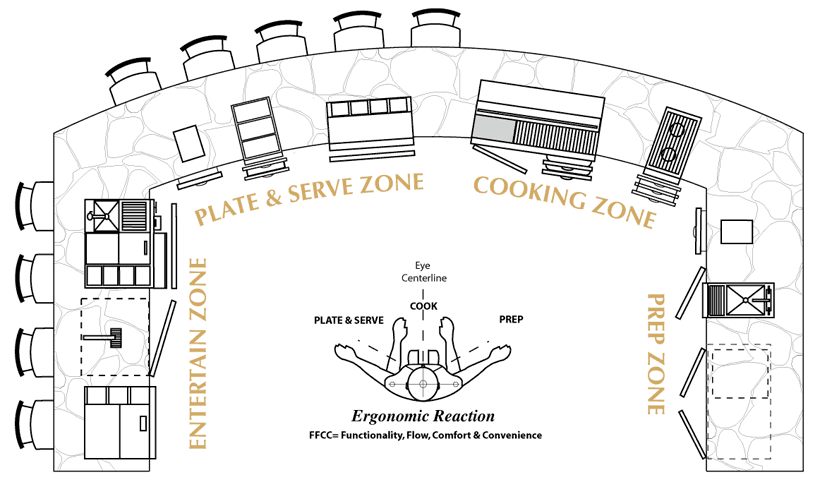
If you have purchased an existing bar however, you may not need to make any major changes to the layout.
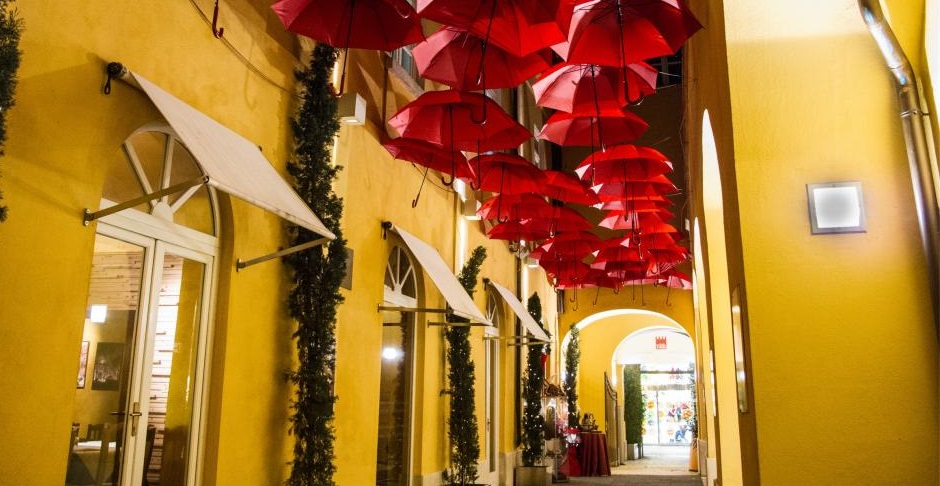
Plan your menu
This step should be done prior to stocking up with the equipment to avoid added costs. At this point you don’t need to have the exact menu, just a general idea of what types of food you will serve e.g. appetizers and sandwiches only or some meals as well?
Serving snacks only (peanuts and popcorn) may seem like an appealing idea at first, yet don’t forget how messy those things can be!
Make sure your menu reflects your bar’s concept.
Serving Chinese noodles in Hawaiian styled bar would look odd, right? Same goes with the drinks – will you serve beer, wine-only or cocktails as well?
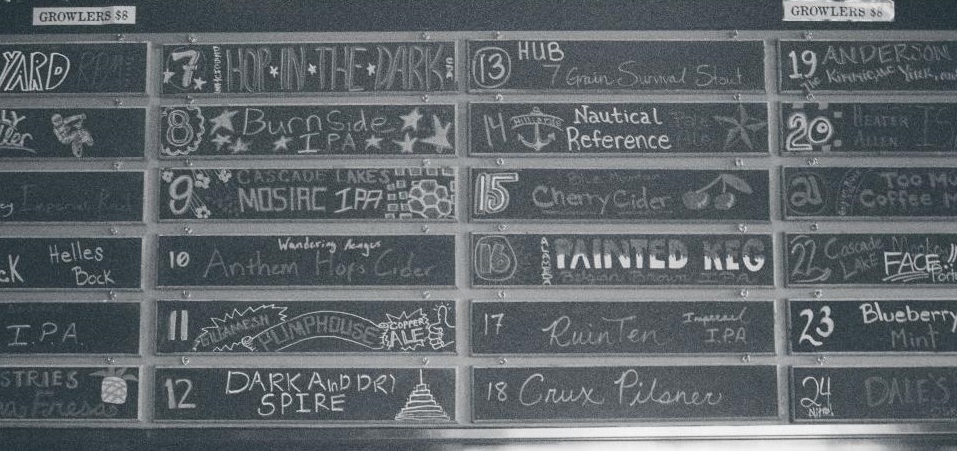
Get a POS system
Choose the right equipment
NB: When deciding on certain purchase, think how it will influence your bar’s profitability.
Do you really need those $500 Scandi design chairs or can opt for a cheaper version?
Think what your clientele would like to see. Do they fancy décor over coziness? Do they know the difference between swank and cost-conscious?
Here are some more important questions to ask before purchasing another piece of equipment:
1. Does it improve the production or service of the bar?
2. Does it meet your expectations for speed, volume, and quality?
3. Do you have enough space to fit it?
4. Does it fit in with the concept of your bar?
5. Is it safe/easy to operate?
6. Does it stand up to the use and abuse of your staff and/or customers?
7. Are there any additional installation/maintenance costs?
8. How easy it is to clean?
Also, here’s a comprehensive ready-to-use checklist for your bar equipment.
When you are done with the equipment and furniture, it’s time to deal with another extremely important piece of equipment – the glasses.
You are a bar. You need to have a lot of them. Here’s a cool infographic to understand what type of glasses exists out there to serve different drinks:
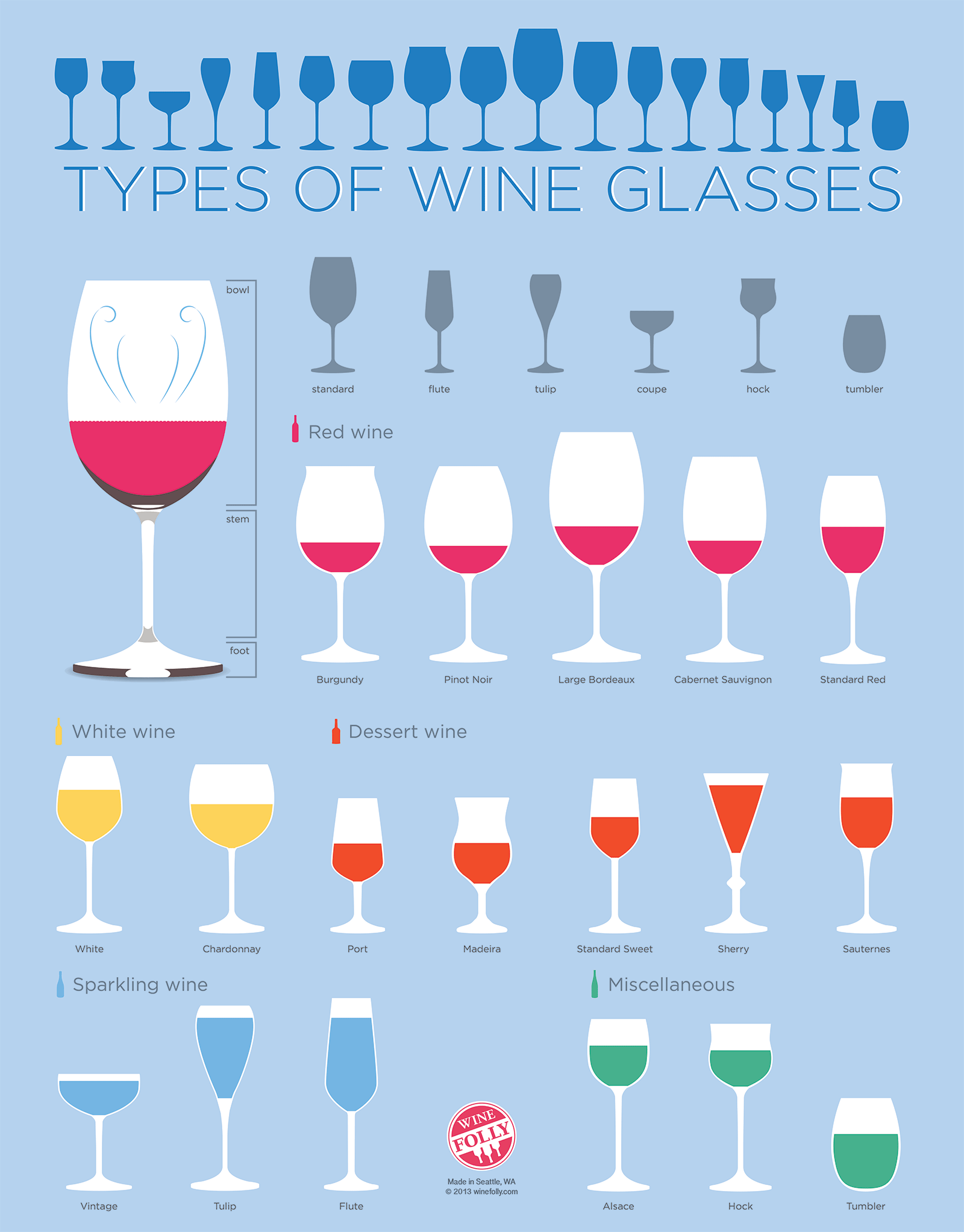
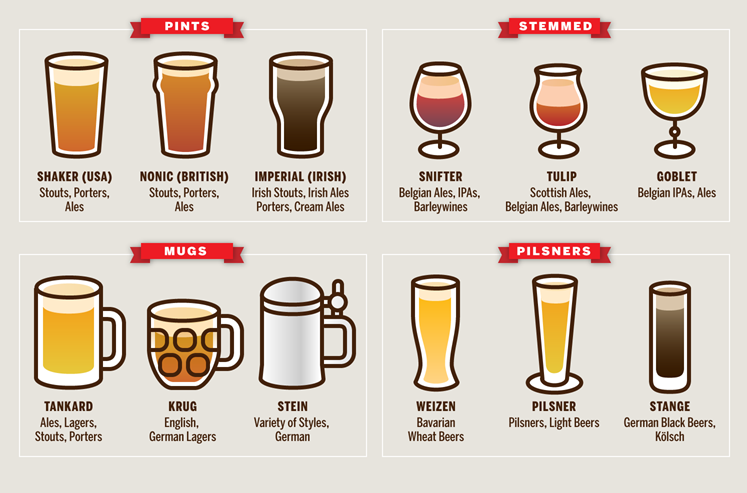
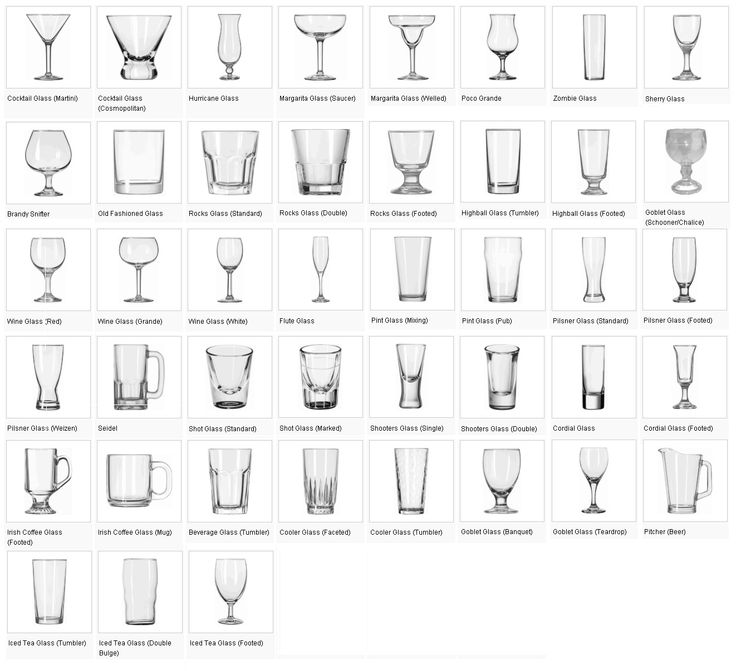
Well, that depends on the size of your venue and approximate amount of customers per day. The number averages around 18 types of glasses of 12 to 48 of each type for an establishment that serves 50-75 customers each two hours.
6. Stock up your bar
If you are opening a beer or a specialty (wine) bar – things are pretty simple. You just need to identify the producers you will feature at your place.
Yet, if you plan to serve liquor as well, pull out some paper and start doing the inventory.
Here’s a sample inventory for a bar serving various types of drinks.
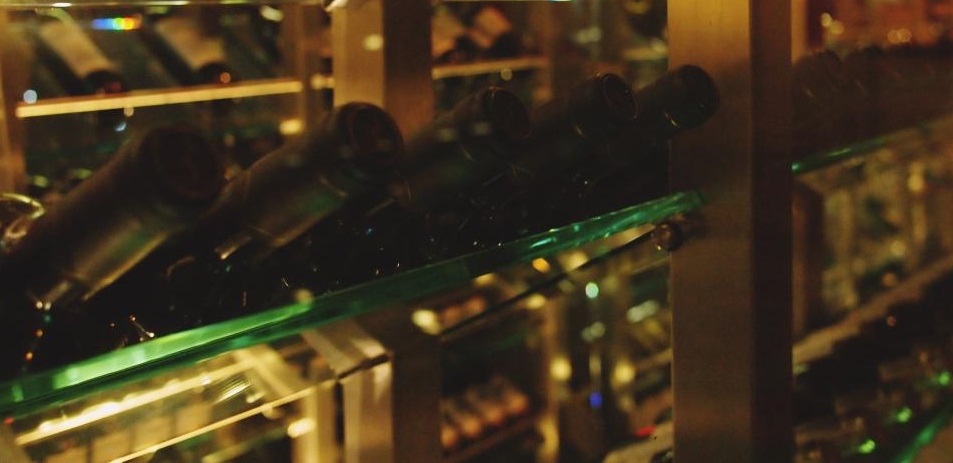
Build up the relationships with suppliers
Most of the times, they’ll tell you what’s selling well in other bars or mention what beer or liquor is trending on the market right now.
In order to choose a reliable supplier, ask yourself the next questions:
1. What brands do they offer? Do they fit into the concept of your bar?
2. What are the payment terms? Any discounts?
3. Any minimum purchased required?
4. How do they prioritize order processing?
5. How often do they make deliveries? During the first 6 months monitor your deliveries to work out the ultimate stock up schedule.
If you end up having just too much of certain beverage, run a promo sale to get rid of it.
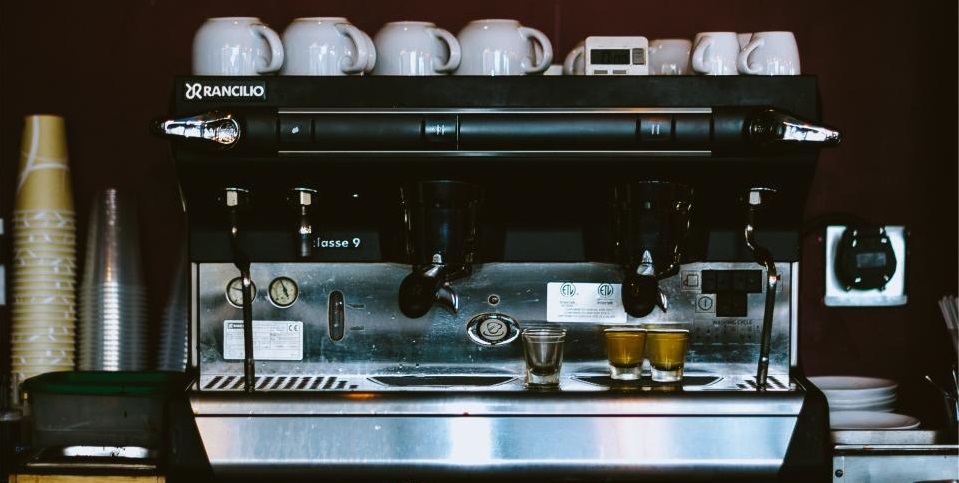
7. Draft your team
Again, depending on the size and your role in the bar, you will need to hire a different amount of personnel.
Here’s an example of how you can structure your operations:
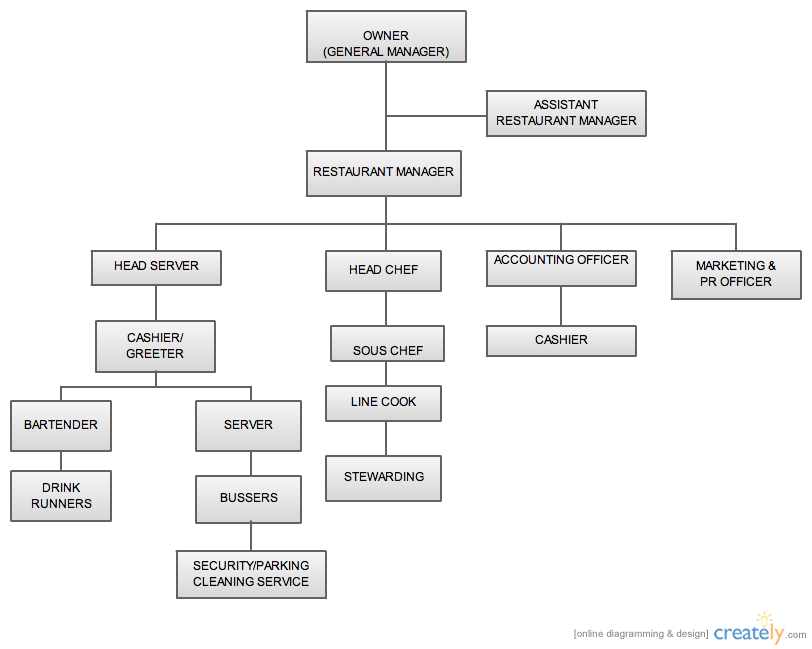
Set up salaries
A lot of managers, especially general managers agree for a lower salary in in exchange for a percentage of the sales. Bartenders/servers/hostess and other front-of-the-house employees typically receive an hourly rate + tips.

Find and hire the right candidates
But wait a second; you haven’t yet found them, right? If a general job post on Cragilist, Monster or any other job boards attracted zero suitable candidates try the following:
- Ask for referrals: you do know someone who’s working in the same business, do you?
- Post on college job boards: a great way to find part-time employees.
- Visit a bartendering school – many of those offer their students a job placement and your bar can be one of them.
- Headhunt for suitable candidates at other places – just mention you’ve liked the way they do their job and leave your card, mentioning you are now hiring.
Here’s more advice on hiring the best people for your place: How to Interview Bar Employees Hire a Bartender in 12 Easy Steps

8. Open your bar
Make sure you have done some promotion in advance as getting zero customers on Day 1 may feel really depressing.

9. Promote your bar
You know your place is awesome. Your mom thinks it’s awesome. Now let’s make the whole neighborhood think so as well!
Spread the news via social media
If your bar does not have a Facebook page these days, it is basically non-existent. Make sure you have created a custom page header that fits in the style of your bar; have some cool, high-resolution pictures of the menu and interiors in the albums; opening hours and location on the map stated.
To grow your social media following, offer some small perk for customers who will like your page on FB or follow you on Instagram e.g. free snack.
Invite online influencers to your opening
While attracting journalists and media might be a little tough for a small bar, inviting a few popular online personas (bloggers, vloggers, instagrammers etc) to live cover your big night may bring you the same buzz levels. And attract journalists afterwards.
Offer a complimentary appetizer to first 25 people to share your post

Offer a secret deal to social media followers
Enlist a special drink/food on the menu that any of your followers can order in case they do some social media action e.g. post a photo and tag you; write a special status etc.
Gauge the anticipation in advance
Reach out to your local media, covering lifestyle and restaurant business, in advance offering an exclusive sneak-peek inside your venue.
Start a happy hour

Offer special deals through group buying platforms
Post a discounted deal at sites like Groupon and LivingSocial for a limited amount of time to attract new visitors. If they like your service, they will spread the word for you!
Collaborate with other businesses nearby
Ask a bookstore to nail your posters in exchange for placing their leaflets on your tables. Offer a pizza delivery to give away your cards in exchange for doing same. It’s a win-win option for both parties.
Hold a “beat the clock” contest
Next Friday announce that you’ll start selling beer at half price from 8 pm and will increase the price by 50 cent each hour till midnight.
The next day you’ll be positively surprised by the amount of folks who did try to beat the clock.
Held thematic promotion days
Mondays can be a Champaign days with 10% discount on all bubbly drinks; Tuesdays are all for tequila; Wednesday is a snack day and so on. Your visitors should know that no matter which day of the week they come, they’d always get a special deal. You can also pair drink discounts with food discounts.